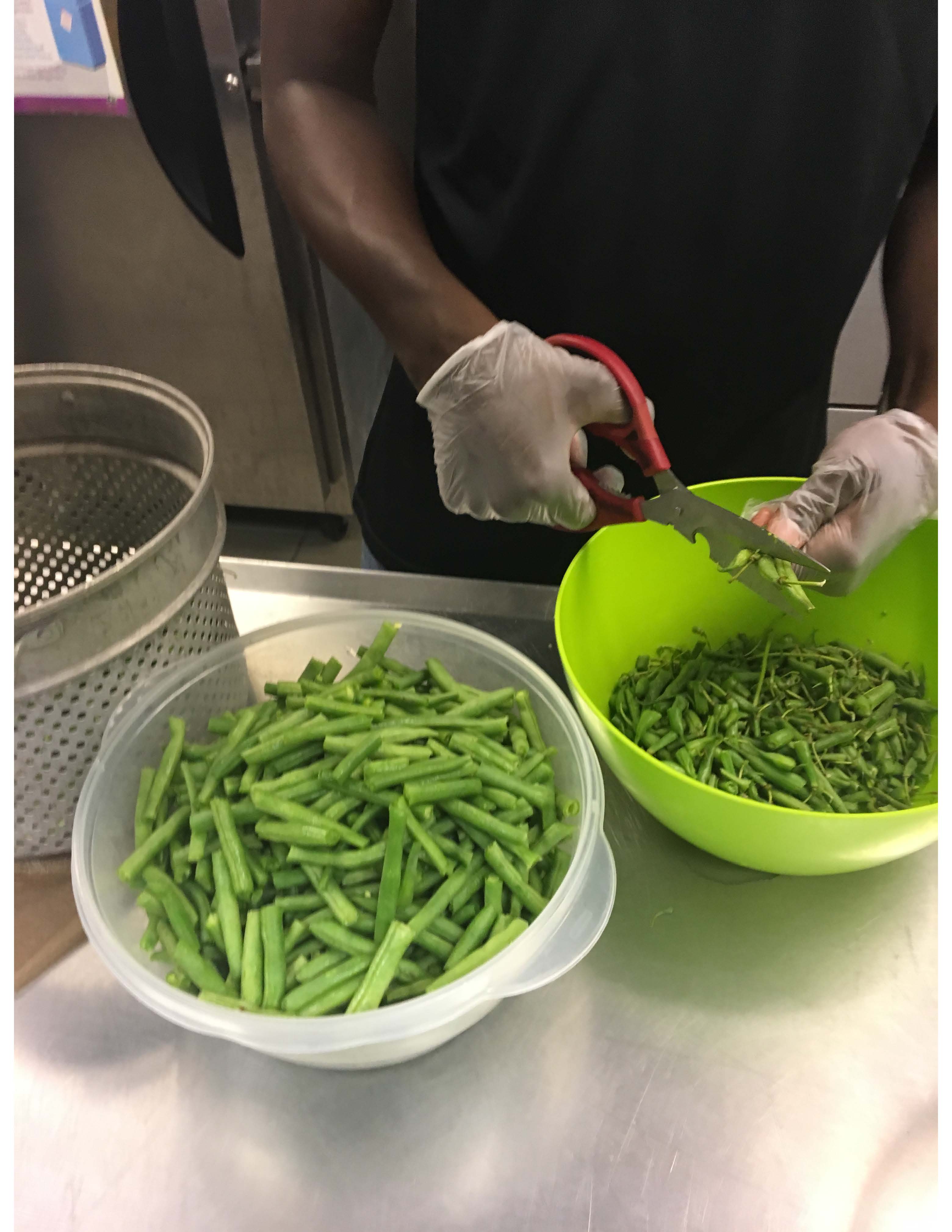YWCA of Kalamazoo Brings Fresh Healthy Food to Little Ones
The YWCA of Kalamazoo’s Children’s Center began sourcing fresh, local produce for its young participants after receiving a MI Farm to School grant this past year.

The YWCA of Kalamazoo’s Children’s Center is making big changes in its food service program to benefit its young participants. The Children’s Center is an early learning center that welcomes children from ages 6 weeks through the year prior to starting Kindergarten. YWCA Kalamazoo Children’s Center utilizes a cradle to community approach in their efforts to provide high-quality, trauma-informed, anti-bias education to children and families in the community.
Nichole Weststrate, the director of the Children’s Center, says their healthy, local food effort started with a question: Can we do a better job around food quality for our children?
Weststrate says the team applied for and got a grant from the MI Farm to School Grant Program, which is administered by Michigan State University’s Center for Regional Food Systems, to help create the pilot. “Once we got the grant and started the planning process, we looked at all the options,” she says. “The team had to address where they would buy food, how they would prepare and serve it, and how the pilot would be integrated in the educational aspects of their program,” Weststrate says.
Not an Easy Sell
The kitchen staff at the Children’s Center was hesitant at first, Weststrate says. “They were concerned because they were stretched for time and they didn’t know how to make this work,” she says.
There was also the question of how the kitchen staff could do in terms of sourcing fresh produce and cooking meals without exceeding the food service budget. Fortunately, the Children’s Center already had a great working kitchen and equipment, including freezers and a dry pantry. Already having the equipment on site meant that preparing and storing the food would be much easier for the food service team and cost-effective because the it didn’t add to the bottom line.
 Kitchen staff weren’t the only ones who Westrate had to sell the idea to. The children weren’t used to or excited about the new foods. “At first they weren’t interested in it because the foods were so different. So, we started slow, adding the local foods to the plates with the food they were used to,” she says. While the kids had to be won over, when it came to eating foods that were unfamiliar, the parents were onboard right away.”
Kitchen staff weren’t the only ones who Westrate had to sell the idea to. The children weren’t used to or excited about the new foods. “At first they weren’t interested in it because the foods were so different. So, we started slow, adding the local foods to the plates with the food they were used to,” she says. While the kids had to be won over, when it came to eating foods that were unfamiliar, the parents were onboard right away.”
Change Finally Became a Win
“Now the food service staff sees the changes as different, but not burdensome,” Weststrate says. “Our food service director has even made changes in what she serves at home because of what we do here.”She adds that staff shares Pinterest recipes and ideas with each other. “The staff loves it and has really embraced it.” They continue to want to learn more. Weststrate says the kitchen staff recently took a tour of the Kalamazoo Valley Food Innovation Lab. “It helps to have exposures like these, because making this kind of change is a relationship experience,” Weststrate says. “And our YWCA is working with some pretty heavy issues daily, so this is something positive,” she adds.
The kids now give the food at the Children’s Center an enthusiastic thumbs up. They are learning while they are eating healthy. “We get them involved in things like making spaghetti from squash or playing with spinach,” says Weststrate.
She says the young kids try new foods and learn to like them. “One little boy says he is willing to try something 20 times before he decides whether he likes it.
An offshoot of the program has been the impact it has had on parents. “They are coming to us to ask where they can buy fresh food to cook and serve in their homes,” Weststrate says. She says some parents had assumed fresh food is more expensive, but the Children’s Center team is working with parents to show them how to eat healthy without the costs to the family food bill going sky high. “They tell us they like the way eating healthy and fresh makes them feel,” adds Weststrate.
Fresh Beyond the Grant
A year later, the Children’s Center team has built bridges to keep the work going. One resource they discovered was the Michigan Farmers Market Association’s Hoophouses for Health program. Hoophouses for Health helps local farmers to get funding to build hoophouses so that they can have a longer growing season and more land to grow on, while also helping families to have more access to fresh foods. Weststrate says, “We have been able to work with the hoop house farmers to keep our costs low.”
Take the Leap
Weststrate suggests that the key to changing the way that children eat in school settings is to “begin, be brave and trust the process.” She says that the Children’s Center was spending so much money on buying processed food before they started this local food initiative that there wasn’t much to lose in trying this new approach.
“Our initial expectations were not high and we started with small goals,” Weststrate says.
Not resting on their Good Food laurels, Weststrate says that the Children’s Center is thinking about next steps that make the connections between healthy eating, farming and better brain development for young children.
Photo credits: Andrea King Collier



 Print
Print Email
Email